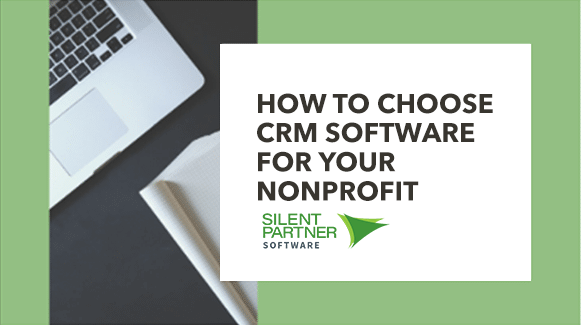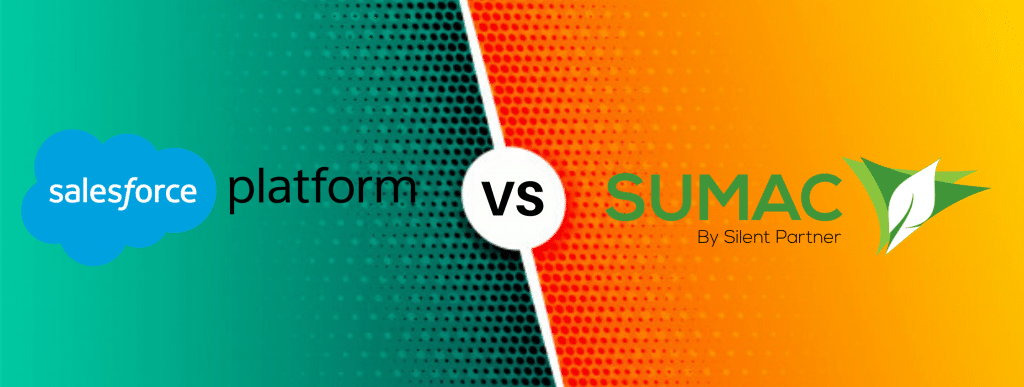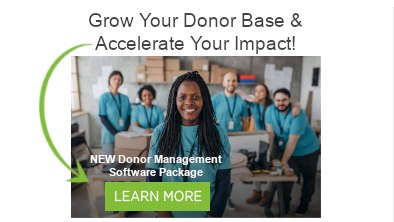You worked your fingers to the bone to create a fundraising campaign – and it worked! You now have a solid group of donors who believe enough in your organization to give you a significant gift out of their own hard-earned cash. Now you can lean back, enjoy your success, and get on with other priorities.
Right?
Wrong.
As you probably know if you’re in the business, a fundraiser’s work is never done – and that goes double when it comes to maintaining and cultivating relationships with your donors. Not only do you need to attend personally to the biggest givers, but you also must focus on smaller donors whose generosity has not been fully tapped. Who knows? With the right incentives and encouragement, the donor who gave $100 today may become the donor who gives $1,000 tomorrow, and who leaves your organization $50,000 in a bequest!
How do you stay connected with your donors, and even increase their loyalty – especially if you have a limited staff or budget? Naturally, you choice of donor engagement strategy will depend a great deal on what you do and how you do it. But even if your mission isn’t glamorous, you have many options for reaching out. Here are some tips to keep the relationships alive.
1. Social media
Many of your donors (even the older ones) are now on Facebook or other social media, and are eager to stay abreast of your activities. Create a Facebook page and Twitter account, and take just a few minutes a day to update when there’s something to share. A quick status update with photo will appear in your donors’ news feed,
keeping you and your activities “front of mind.”
2. Newsletters
A little more time-and-energy consuming than social media, newsletters are the workhorse of relationship cultivation. Many organizations create print newsletters which can then be easily repurposed as digital files. Newsletters can be send out as often as you have news, and can be emailed, snail mailed, and added to your
Website. Key to a successful newsletter is inclusion of photos and names of donors (everyone looks for themselves before reading features!), as well as plenty of color, large font, and intriguing headlines.
3. Volunteer Outreach Specialists
If you have volunteers who are aching to be of service, get them to work contacting donors. Some organizations actually set up phone banks and provide volunteers with lists of individuals to call with the message “we’re not asking for money – we’re just calling to update you on the work we’re doing.” Naturally, you’ll also want to equip your volunteers with key information about events,
achievements, or upcoming activities to highlight in their conversation, along with answers to Frequently Asked Questions such as “when will the new building open?” or “what’s the next project you have planned?”
4. Special Events
Non-profit events can be very popular with donors, especially if they provide an opportunity to do something fun, elegant, new, or unique. Of course, you’ll invite your donors to events such as the opening of a new building, exhibit, or show. But that’s just the tip of the iceberg. For example:
- You might also want to invite selected volunteers to “brown bag luncheons,” where they can hear about your work directly from staff and clients.
- Donors may be interested in behind-the-scenes tours that highlight the importance of their donation. For example, they might want to see how therapists are using the pool they helped finance to help stroke victims regain their strength and flexibility.
- Donors may want to see a work in progress. A tour of a construction site or an on-site exclusive viewing of artwork that’s not yet displayed in the gallery can give donors a sense that they’re an important part of the process.
5. Previews
If you’re a cultural or arts organization that runs performances or exhibits, you’ll want to be sure to invite your donors to special previews. They wouldn’t have given money if they didn’t care deeply about your mission, so chances are they’ll value the chance to be among the first to see the show. Even better, they’ll be delighted to meet and hear from your artistic director, prima ballerina, or lead actor.
6. Local meet and greets
If you’re a college, university or school, or if your donor base tends to “migrate” south in the winter, you might want to consider local meet and greet events. These are usually small social gatherings, often located in a private home, where donors meet, eat, and have a chance hear from and get to know a major player or players in your organization. Local meet and greets can feature an artistic director, a maestro, a university or college president, a major researcher, an award-winning student, a particularly successful client, or anyone else who has the cache and charisma to attract a group of donors.
7. “Free” services or resources
Some organizations provide services and resources that are important to the community – but are also important to donors or their children. For example, you might provide a program for children with special needs, and your top donors give because they have grandchildren with learning or developmental issues. When that’s the case, you have the opportunity to provide special services to your donors who have need of your offerings. If you’re membership driven, you can add free consultations or services to your list of member benefits; otherwise you might choose to create special donor events or provide 1:1 consultation to donors on an as-needed basis.
While there is no guarantee that staying connected will increase donor generosity, decades of experience (and common sense) show that a solid relationship is a key to ongoing gifts. Just as importantly, donors who feel a personal connection to your organization are very likely to recommend your organization to friends and family –
increasing your donor base exponentially. And donors are often well-connected people whose advice and involvement can improve the quality of your offerings. And free advice from a really qualified consultant is nothing to sneeze at!
Download Your Free Guide on Choosing CRM Software for Your Nonprofit!





